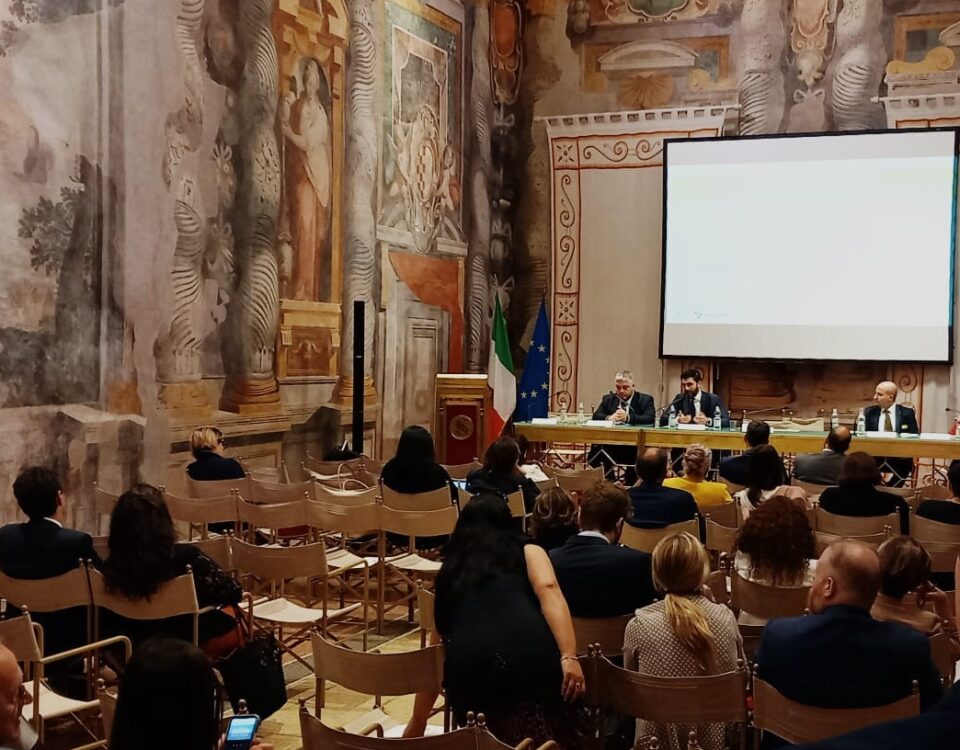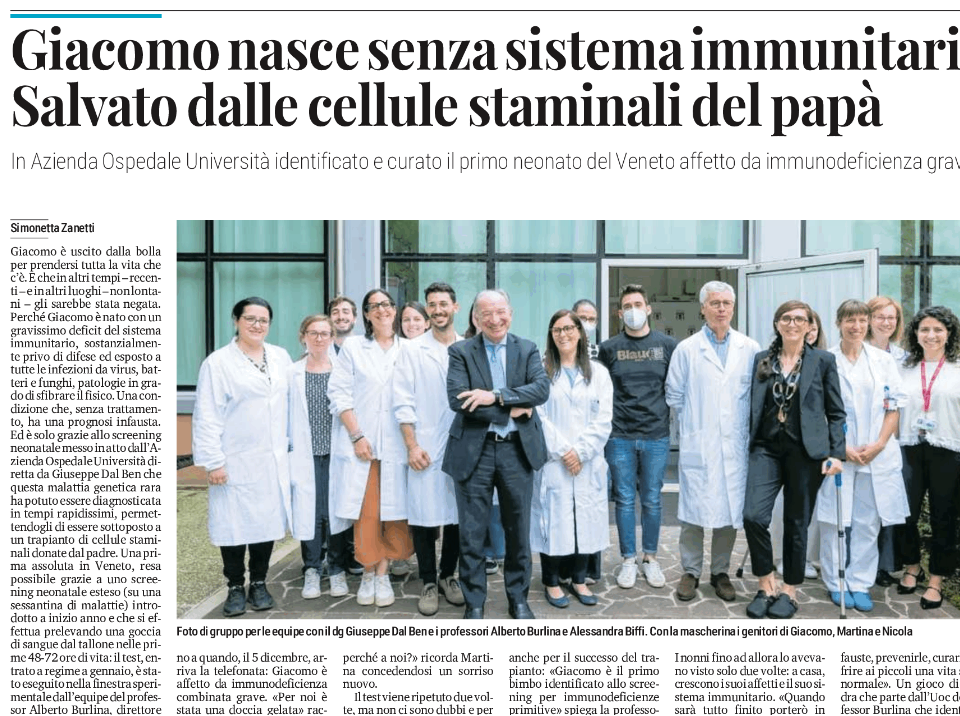Rare But Deadly – Some simple, cheap blood tests could save thousands of kids’ lives every year – con traduzione in italiano
22 Maggio 2005Medicinali sperimentali, i principi e le linee guida
25 Maggio 2005Cord blood helps babies survive a fatal disease
“Doctors have successfully treated babies with a usually fatal genetic disorder of the brain by using stem-cell transplants from umbilical-cord blood.
The successes, reported Thursday in The New England Journal of Medicine, offer hope for victims of a host of rare diseases brought on by genetic flaws that cause specific protein deficiencies in the brain.
There are more than 45 known such diseases, affecting about 5,000 babies of the roughly 4 million born in the United States each year, with some fatal, others severely disabling.
“The diseases may be uncommon, but the cost to the child, their family and to society at large is enormous when one considers the burden of caring for a severely disabled child,” said Dr. Joanne Kurtzberg, senior author of the study and director of the Pediatric Blood and Marrow Transplant Program at Duke University.
The study shows that the transplants not only enhance survival for babies born with the condition called Krabbe disease – which is normally fatal by age 2 – but if done before symptoms develop, they can allow the babies’ brains to develop at or near normal pace.
Infants with Krabbe disease lack an enzyme necessary to form the protective sheath of myelin, a white fatty insulating material that protects developing brain cells.
“The infants become irritable, lose all their developmental skills, become deaf and blind, have seizures and die,” said Dr. Maria Escolar, lead author of the study and an assistant professor of pediatrics specializing in neurological and functional changes in patients with rare diseases.
“It is very painful for parents to watch their children deteriorate this rapidly. This study shows that finally there’s a treatment that offers hope,” she added.
Eleven babies received the transplants as newborns from unrelated donors. Those babies showed no symptoms but were tested for the disease before birth because of a family history for the condition. In addition, 14 older infants who had begun to show signs of the disease were given transplants.
All the infants who received transplants as newborns are still alive. The oldest is 6 1/2 years old, living four years longer than an untreated sibling with the same disorder. Most of the newborns have shown continual improvement in developmental skills and have had age-appropriate mental and language skills.
Among the older infants who received transplants, only six were still alive at the end of January, and they showed no neurological benefit from the transplants.
“This underscores that time is of the essence in treating the children before symptoms progress and become irreversible,” said Kurtzberg, a pioneer in doing transplants from unrelated cord-blood donors. Her team has successfully treated nearly 150 children with cancer and rare genetic diseases since 1993.
Her team showed similar benefits in children suffering from another enzyme-deficiency disorder, Hurler syndrome, with 85 percent surviving for up to seven years from the condition, which is marked by abnormal bone, cartilage and facial development.
Kurtzberg said the treatment successes provide a strong argument for implementing universal screening of all newborns for diseases caused by the genetic enzyme deficiency.
She also noted that the study demonstrates that cord-blood transplants provide a better and faster correction of enzyme deficiencies than do transplants of adult bone marrow.
Stem cells from cord blood travel to the brain more rapidly than adult bone-marrow stem cells, and repair deficiencies in both the central and peripheral nervous systems.
Thus, disease progression is stopped about two to four months earlier in patients getting cord blood compared to those receiving adult bone marrow, a window of time in which huge developmental milestones are occurring in infants, Kurtzberg said.
“




